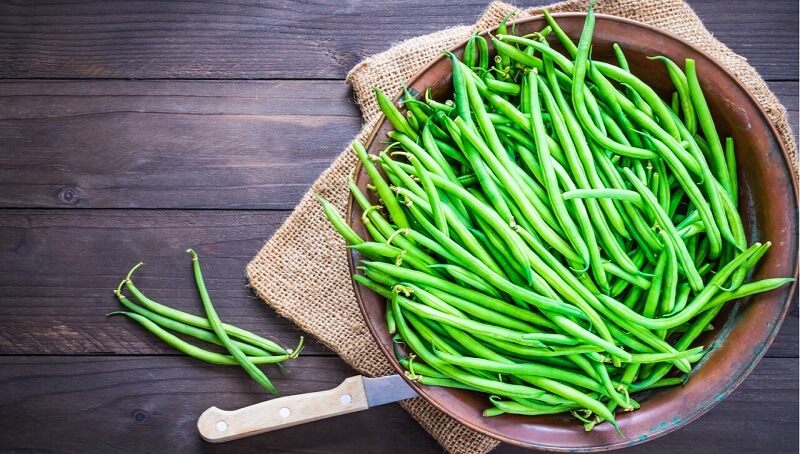If you know your way around the kitchen, you’ve surely found recipes that call for either 2 cups of whole green beans or one cup of chopped green beans but figuring out exactly how many beans you’ll find in a cup won’t be easy most of the time. As We’ve done so many times in the past, we took it on ourselves to do the necessary experiments to figure out exactly how many green beans you will have to use, to make cooking a whole lot easier.
So we went to the closest grocery store and checked out their vegetable section, in the hope of finding out how many beans we can fit in an average-sized cup. A simple look at the products available for sale made us understand that one pound of green beans would be the perfect choice for testing and measuring the amount of green beans that fit in a cup. Our initial tests showed us that one cup of chopped green beans will usually have a weight of about 1/3 pound, which makes a whole pound fit in about 3 cups, the same pound having around 35 to 40 green beans. Keep in mind that a cup of green beans will lose about 2 to 3 tablespoons when cooked.
We’ll pause the article here to give you an interesting fact: Green beans are really immature dry beans. They have originated in Peru, but are now used all around the world. Due to the very tough string that goes through the pod, their initial name was string beans. Botanists actually removed the string by 1894, with the help of selective breeding techniques. They then started to produce stringless varieties that we like to eat nowadays.
You might also like our articles on the weight of mint, thyme, or green onions.
So by this point, you should be confident when working on recipes that call for either whole or chopped green beans measured by the cup or by the pound. But if you still think you might need help with conversions between different amounts and sizes of green beans, try using the conversion tools we’ve built below for easier measurements.
How to Store Pound of Green Beans
As I said before, immature pods of the bean are called beans. Mature fresh seeds, shell beans, and even dried beans that will have to be reconstituted in liquid because they have been dried in the pod are all types of beans that grow in pods. If you let beans grow long enough, you will get all of their three stages, but you won’t necessarily get the same amazing flavor when they reach each stage.
Short Term Bean Storage
If you want to store shell or snap beans for short-term usage, you can place them in a perforated plastic bag and then store them in the refrigerator, in the humid crisper section. This will make them last for anywhere between 3 and 5 days.
You should try to leave the shell beans shelled and inside of their pods until just before you cook them.
Long Term Bean Storage
 Freezing is a great option. Snap beans will have to be blanched in boiling water for 3 minutes for each pound of beans. After chilling them in ice water for around 3 minutes, you will have to drain them and then store them in freezer bags. You can keep beans at -17.8°C, which is around 0°F, for around 11 – 12 months.
Freezing is a great option. Snap beans will have to be blanched in boiling water for 3 minutes for each pound of beans. After chilling them in ice water for around 3 minutes, you will have to drain them and then store them in freezer bags. You can keep beans at -17.8°C, which is around 0°F, for around 11 – 12 months.
When it comes to shell beans, it is better to blanch them by size. Shell beans: blanch beans by size. When blanching medium beans, keep them in boiling water for 2 minutes. In the case of larger beans, 3 minutes will be better. As soon as you’re done, keep them in ice water for the same amount of time. After draining them, pack them loosely in freezer bags or boxes. You will have to keep the beans at -17.8°C or 0°F and in this way they will keep for 6 to 12 months.
You can also pickle or can those beans, in addition to freezing them.
